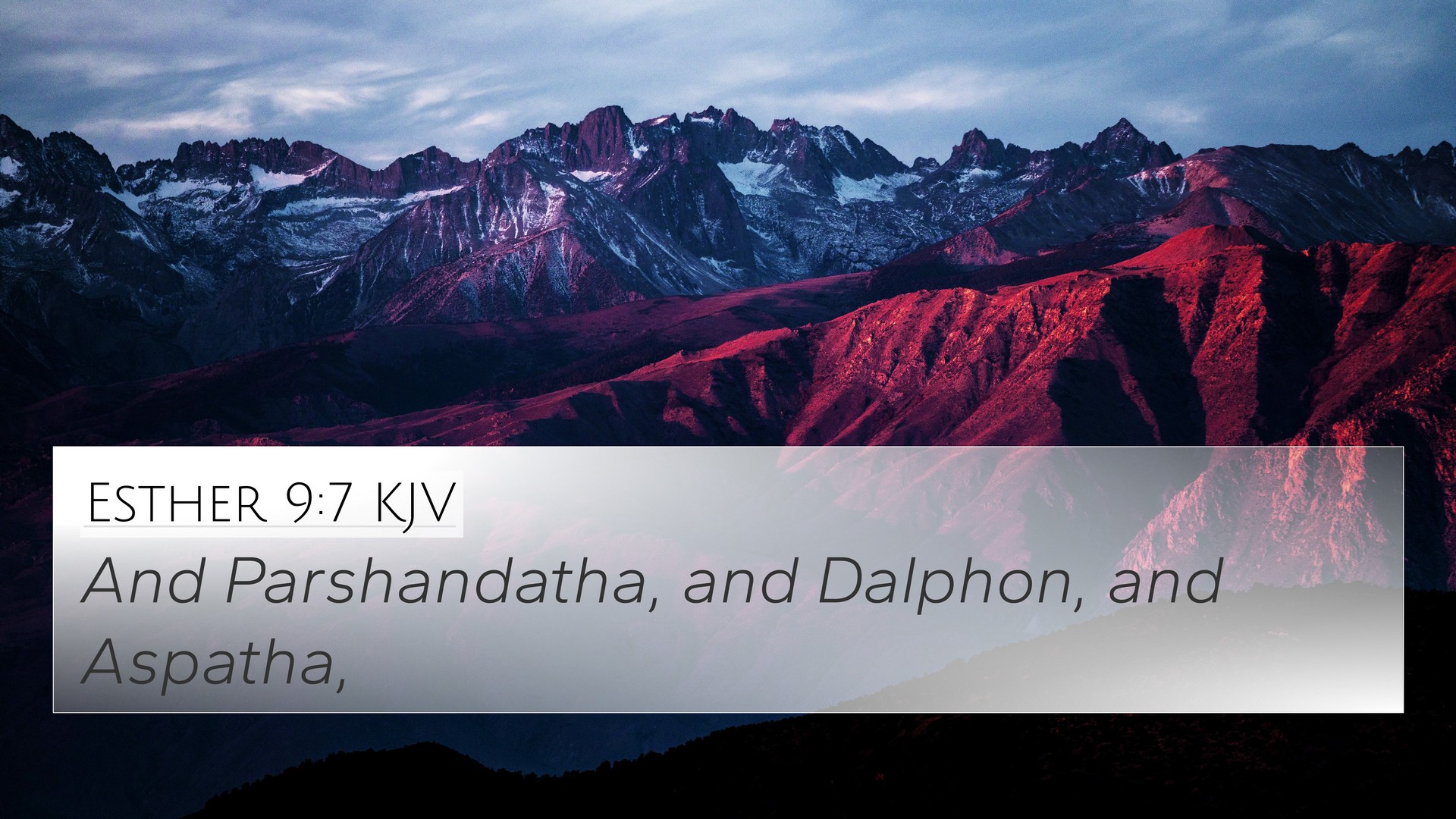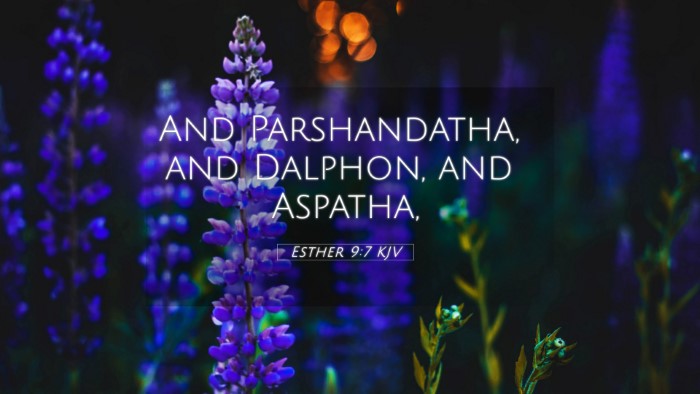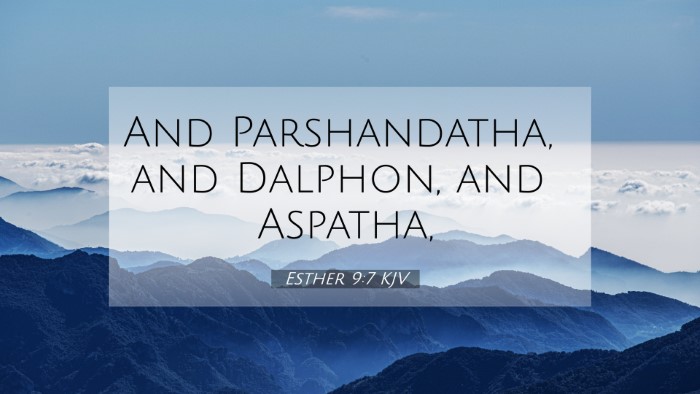Understanding Esther 9:7
Esther 9:7 reads, "And the names of the ten sons of Haman were given: Parshandatha, Dalphon, Aspatha,..." This verse lists the names of the sons of Haman, who were specific figures in the story of Esther, symbolizing the significance of their downfall as part of the celebration of Purim.
Summary of the Verse's Significance
In this passage, Haman's sons represent the enemies of the Jews, who faced destruction at their father's hands due to his evil plot against them. The mentioning of their names serves not only to highlight their demise but also to document and remember the victory of the Jewish people over their adversaries.
Exegetical Insights from Public Domain Commentaries
-
Matthew Henry's Commentary:
Henry discusses the importance of the mention of Haman’s sons, suggesting that their downfall serves as a warning against pride and the scheming of the wicked. He emphasizes God's justice and the preservation of His people.
-
Albert Barnes' Notes on the Bible:
Barnes notes that the naming of these sons serves to fulfill a historical record, emphasizing the completeness of the Jewish victory. The sons symbolize the broader theme of God’s intervention in history for the protection of His people.
-
Adam Clarke's Commentary:
Clarke elaborates on the significance of Haman's lineage being wiped out, explaining that it indicates a complete removal of the threat that Haman posed to the Jews. This aligns with the broader biblical theme of God delivering His people from evil.
Bible Verse Cross-References
This verse can be cross-referenced with several others that speak to divine justice and the downfall of the wicked:
- Esther 9:10: Discusses the fate of Haman and reiterates the justice dealt.
- Proverbs 11:21: "Though hand join in hand, the wicked shall not be unpunished; but the seed of the righteous shall be delivered."
- Psalm 37:1-2: "Fret not thyself because of evildoers, neither be thou envious against the workers of iniquity. For they shall soon be cut down like the grass, and wither as the green herb."
- Obadiah 1:10: "For thy violence against thy brother Jacob shame shall cover thee, and thou shalt be cut off forever."
- Isaiah 54:17: "No weapon that is formed against thee shall prosper; and every tongue that shall rise against thee in judgment thou shalt condemn."
- 1 Samuel 2:30: "But now the Lord says, 'Far be it from me! Those who honor me I will honor, but those who despise me will be disdained.'
- Romans 12:19: "Dearly beloved, avenge not yourselves, but rather give place unto wrath: for it is written, Vengeance is mine; I will repay, saith the Lord."
Thematic Connections
Esther 9:7 connects to important themes within the Bible, notably:
- Divine Justice: The downfall of Haman and his sons exemplifies God's justice against those who plot evil against His people.
- Deliverance: This verse aligns with the broader story of the Jewish people's deliverance from enslavement and danger.
- Memory and Commemoration: The naming of Haman's sons serves a liturgical purpose as the Jewish people commemorate their victories during Purim.
Bible Verse Parallels and Links
This passage can be interpreted alongside other narratives within both the Old and New Testaments that reflect on the themes of justice, deliverance, and vindication of the righteous. For instance:
- Linking Biblical Texts: The events in Esther parallel stories in Exodus, where God delivers His people from Egypt.
- Inter-Biblical Dialogue: Connections can be seen in narratives of judgment found in the prophetic books, wherein God executes justice against nations that oppose His people.
Conclusion
Esther 9:7 serves not only as a historical record but also as a testament to God's faithfulness in delivering His people from their enemies. The cross-references and commentaries provided equip believers with a deeper understanding of the text's significance and themes, encouraging them to explore connections between various passages throughout scripture.
Tools for Bible Cross-Referencing
For further study, consider using tools like a Bible concordance or a Bible cross-reference guide. These resources can greatly enhance your understanding of scriptural links and thematic connections throughout the Bible.


